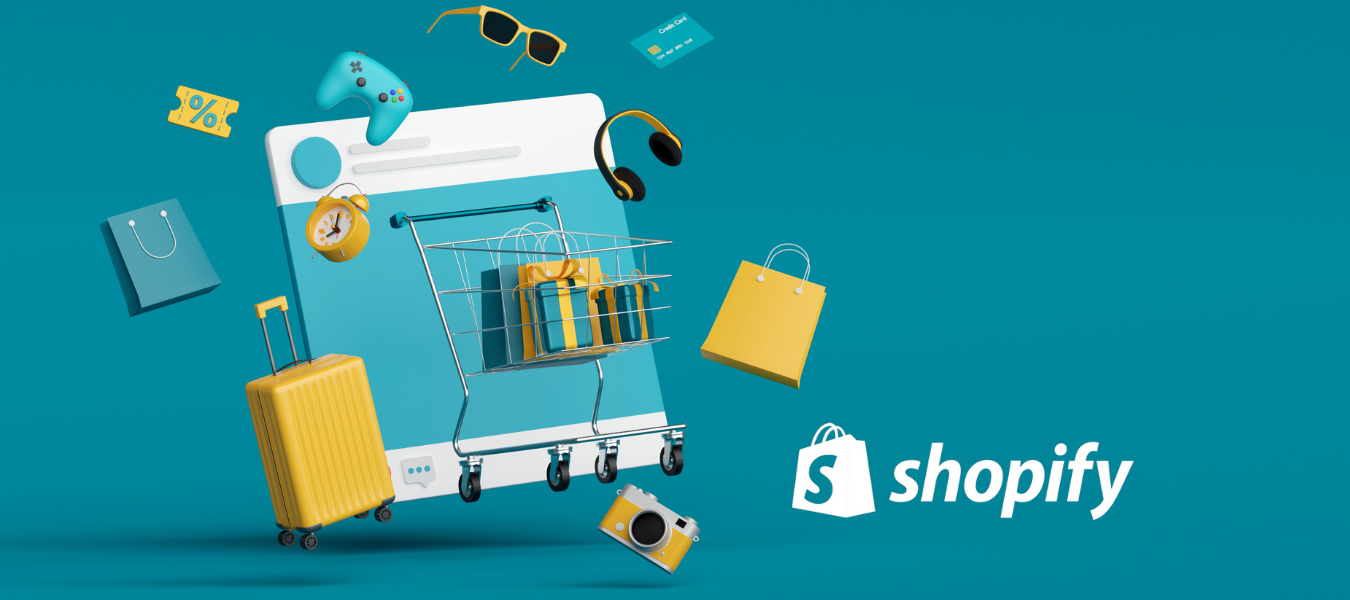



Shopify has become a go-to platform for entrepreneurs looking to establish and grow an online store. Whether you’re a new seller or an experienced merchant, Shopify provides the flexibility, resources, and global reach needed to build a successful eCommerce business. But to make the most of Shopify, it’s essential to understand the costs, create a winning strategy, and use proven tips to increase your sales.
In this article, we’ll break down everything you need to know about selling on Shopify, from pricing structures to essential strategies. By the end, you’ll be equipped with the knowledge to create a profitable Shopify store that stands out from the competition.
Shopify is an all-in-one eCommerce platform that allows you to create, customize, and manage an online store with minimal hassle. From inventory tracking to marketing, payments, and shipping, Shopify brings everything you need under a single platform. This seamless integration allows you to save time and reduce potential errors.
Because Shopify is a cloud-based, fully hosted platform, you don’t need to worry about managing servers or software updates. Simply log in from any device with internet access to manage your store, add new products, and process orders. Shopify’s all-in-one approach empowers you to focus on growth while the platform handles the technical aspects of running an online store.
Here are some key reasons why Shopify is a favorite among sellers:
Understanding Shopify’s pricing structure is crucial for budgeting and planning. Here’s a breakdown of the main costs you’ll encounter:
Shopify offers three primary plans with different features tailored to meet various business needs:
Pro Tip: For those who want to test the waters, Shopify also offers a 14-day free trial so you can explore its features risk-free before committing to a plan.
If you use Shopify Payments (the platform’s built-in payment processor), there are no additional transaction fees beyond the standard credit card processing rates. These rates range from 2.9% + $0.30 per transaction (Basic) to 2.4% + $0.30 (Advanced). If you use a third-party payment processor, Shopify charges an extra transaction fee, starting at 2% for the Basic plan and decreasing with higher plans.
One of the first challenges for any Shopify seller is deciding what to sell and where to source those products. Fortunately, there are several paths you can take, depending on your business goals and resources:
Dropshipping allows you to sell products without holding inventory. Instead, you partner with suppliers who store, package, and ship products directly to your customers. This is a low-cost, low-risk option, especially for beginners, as it doesn’t require upfront inventory investment. Platforms like Mysellerhub simplify dropshipping by offering integration with Shopify, exclusive products, and streamlined inventory management.
If you have access to physical products or can buy inventory in bulk, managing your own stock gives you complete control over quality, branding, and shipping. This model is ideal for businesses looking to establish a strong brand presence or sell unique items but requires upfront investment in storage and logistics.
For sellers aiming to build a distinctive brand, private labeling or creating custom products is an excellent choice. You can source products from manufacturers and customize them with your logo, packaging, or design. While this option requires higher investment and planning, it allows you to charge premium prices and create a lasting impression on your customers.
If physical goods aren’t your focus, consider selling digital products like eBooks, courses, stock photos, or templates. Digital goods have no inventory or shipping requirements, making them a high-margin and scalable option. This is perfect for creators or businesses offering valuable knowledge or digital tools.
Once you’ve selected your Shopify plan, the next step is building a strategy that will make your store a success. A strong strategy can help you attract and retain customers, ultimately driving sales.
Every successful Shopify store begins with a clear niche and brand identity. Rather than trying to appeal to everyone, focus on a specific customer group with shared interests and needs. For example, instead of a general “fitness” store, consider narrowing down to “eco-friendly yoga gear” or “home workout equipment for small spaces.”
A well-defined niche allows you to tailor your messaging, products, and marketing efforts specifically to your target audience, helping you stand out from competitors.
Shopify provides excellent tools to help you optimize your store for SEO. Focus on key SEO practices:
Content marketing is a powerful tool for building your brand and driving traffic to your Shopify store. Start by creating a blog within your Shopify store where you can publish articles that appeal to your audience, such as product guides, industry trends, or tutorials.
Engage on social media platforms that resonate with your target market. If you’re selling visually-driven products like apparel or decor, platforms like Instagram and Pinterest are great. Meanwhile, Facebook and TikTok can be great for broader audiences and engaging video content.
Retargeting is one of the best ways to capture potential customers who visited your store but didn’t make a purchase. Use retargeting ads on Facebook, Instagram, and Google to bring these visitors back.
Email marketing is also key to building a loyal customer base. Start by creating a sign-up form on your site to capture emails. Then, use email campaigns to promote new products, share exclusive offers, and re-engage customers with abandoned cart reminders.
Every eCommerce platform has its strengths and weaknesses. Let’s take an honest look at the pros and cons of Shopify to help you make an informed decision about whether it’s the right platform for your business.
Shopify allows you to connect your store with other sales channels like Amazon, eBay, Instagram, and Facebook. This capability not only extends your reach but also provides a streamlined way to manage all your sales in one place, increasing your opportunities for sales and brand exposure.
Shopify enables sellers to establish a unique brand identity through customizable themes, a wide range of fonts, and adaptable color schemes. Building your brand is further supported by adding logos, custom domains, and personalized design elements, allowing you to stand out from competitors.
The Shopify App Store provides thousands of apps to enhance your store’s functionality, from SEO tools to email marketing, customer service, and inventory management. Shopify apps allow you to tailor the platform to meet specific business needs, making it adaptable to any eCommerce model, whether dropshipping, B2B, or custom products.
By the way, Mysellerhub app is also available in Shopify App store — check it out and learn more by this link.
Shopify offers built-in SEO tools and third-party apps that help your store rank better in search engine results. With the ability to customize meta tags, alt text, as well as implement clean, mobile-responsive themes, Shopify helps you drive organic traffic more effectively.
Shopify offers round-the-clock support through email and live chat, which is especially valuable for first-time sellers. Whether you encounter issues with your store setup or face technical difficulties, the support team is available to guide you.
Besides the monthly subscription fee, there are often added expenses, including app costs, transaction fees if not using Shopify Payments, and additional fees for premium themes. These expenses can add up, particularly as your business grows, making Shopify potentially costlier than some other platforms.
Although Shopify themes are highly customizable, deeper customization may require coding knowledge or hiring a developer. For unique functionalities or layouts, especially on lower-tier plans, you may need to rely on a developer or advanced apps, which can increase costs and complexity.
Shopify imposes transaction fees if you use a payment gateway other than Shopify Payments. This can impact sellers with existing payment solutions or international payment needs, as they may face higher fees unless they exclusively use Shopify’s built-in payment processor.
While Shopify supports multiple languages and currencies, it may not fully meet the needs of international sellers. For instance, Shopify Payments is limited to specific regions, and currency conversion options may be insufficient for businesses selling globally. Sellers looking to expand internationally may face additional expenses or limitations without third-party solutions.
While Shopify’s App Store provides excellent add-on functionality, relying on apps can lead to increased costs and complexity. Many advanced features (such as subscription management or advanced analytics) require paid apps, leading to higher monthly costs. Additionally, managing multiple apps can slow down your site or create compatibility issues over time.
Shopify can be a powerful ally for many entrepreneurs, offering ease, efficiency, and the tools to scale. It’s a platform that removes the complexities of e-commerce, helping you focus on what matters: reaching customers and growing sales. With countless apps, an intuitive design, and a reputation for reliability, Shopify has something for almost every seller.
But each business is unique, and so are its needs. If a flexible budget, scalability, and fast setup are on your priority list, Shopify might just be the perfect match. However, if complete control over design and pricing flexibility are non-negotiable, you may want to explore all options before committing. At the end of the day, the best choice is one that aligns with your vision and supports the unique goals you have for your business journey.





